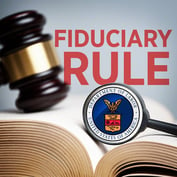The July 1 compliance date for the Department of Labor’s (DOL) final 408(b)(2) fee disclosure rule has finally arrived, and even though the final rule was a long time coming, covered service providers have been ramping up their compliance efforts for months.
The final rule on 401(k) fee disclosures requires service providers to furnish information that will enable pension plan fiduciaries to determine both the reasonableness of compensation paid to service providers and any conflicts of interest that may affect a service provider’s performance under a service contract or arrangement.
When the final rule was released on March 1, Phyllis Borzi, assistant secretary for DOL’s Employee Benefits Security Administration (EBSA), said that with the final 408(b)(2) rule, businesses that sponsor retirement plans as well as the workers who participate in those plans will now be able to “get better information on associated fees and expenses,” allowing them “to shop around and make informed decisions that will lead to cost savings and a larger nest egg at retirement.”
Borzi warned, however, that service providers not in compliance as of July 1 will be in violation of the Employee Retirement Income Security Act’s (ERISA) prohibited transaction rules and subject to penalties under the Internal Revenue Code.
The 408(b)(2) regulation applies to “covered plans,” that is, all ERISA-governed retirement plans other than SEP IRAs and SIMPLE IRAs. Individual retirement accounts are also excluded. All 401(k) plans, ERISA-covered 403(b) plans, defined benefit pension plans and profit sharing plans are subject to the regulation.
“408(b)(2) imposes a legal obligation on service providers that was always expected to be met since ERISA was passed,” says David Witz, managing director of Fiduciary Risk Assessment (FRA)/PlanTools. However, “failure to meet the historic expectation [under 408(b)(2)] is due in large part [to] a lack of enforcement.”
Under 408(b)(2), Witz explains in a recent PlanTools white paper on the topic, covered service providers (CSP) will be required to deliver a written disclosure to the responsible plan fiduciary of their status as a fiduciary, the services they will render, fees charged for services rendered and a description of the arrangement between the payer and the CSP.
Once this information is received, the fiduciary has an obligation to:
- Read the disclosures
- Determine if there are conflicts of interest
- Determine if fees are reasonable
- Determine if the disclosures meet the 408(b)(2) regulatory requirements
All may go smoothly come July 2. However, Witz points to three reasons why a fiduciary may find that on July 2 they are busy preparing three written requests for information from their CSP. They include:
- The CSP failed to provide any disclosures.
- The CSP provided incomplete disclosures.
- Additional information is necessary to determine if the contract or arrangement is prudent and conflict free.
To clarify areas where plan administrators and service providers needed help, EBSA issued in early May guidance to help them comply with the requirements of new rules 408(b)2 and 404(a)5, EBSA’s final regulation on conflicted investment advice to plan participants, which becomes effective in September.
The guidance—Field Assistance Bulletin No. 2012-02—included a set of frequently asked questions and answers. At press time in late May, a DOL spokesman told Investment Advisor that another set of guidance—which would focus more closely on just 408(b)(2)—would be out before the July 1 compliance date.
Craig Hoffman, general counsel and director of regulatory affairs for the American Society of Pension Professionals and Actuaries (ASPPA), told DOL in a recent comment letter that the Department needed to clarify the proper treatment of asset allocation strategies under the new rules—408(b)(2) and 404(a)—and a transitional period of relief was needed for practitioners and plan sponsors as they move forward with the implementation process.
Some transitional relief was provided in the guidance DOL issued in its early May Field Assistance Bulletin, Hoffman says, however ASPPA would have liked it to be “stronger.” DOL said in its Bulletin that while “further broad-based extensions” for compliance with both rules are not needed, for enforcement purposes, the Department will take into account whether covered service providers and plan administrators “have acted in good faith based on a reasonable interpretation of the new regulations. If they have acted in good faith based on a reasonable interpretation of the new regulations, enforcement actions generally would be unnecessary if the covered service provider or plan administrator, as applicable, also establishes a plan for complying with the requirements of this Bulletin in future disclosures.”
Hoffman questions what the DOL means by stating that “enforcement actions generally would be unnecessary” if the provider or plan administrator has acted in good faith. “There’s a lot of equivocation in that sentence,” he says. “What does ‘generally’ mean?”
While the guidance provided much needed assistance, to the surprise of many it also ushered in a new requirement involving brokerage windows. “The DOL has chartered some very new ground on brokerage windows that nobody expected,” Hoffman says. What the DOL essentially says in its Field Assistance Bulletin is that if a “plan offers only a brokerage window or similar arrangement then the plan fiduciary may be obligated to monitor the investments that are selected through the brokerage window by participants and beneficiaries and potentially treat it as a designated investment alternative.”
Indeed, while industry officials applaud DOL’s fee disclosure rules, they also cite the myriad challenges that the rules bring.








 June 26, 2012 at 08:00 PM
June 26, 2012 at 08:00 PM









